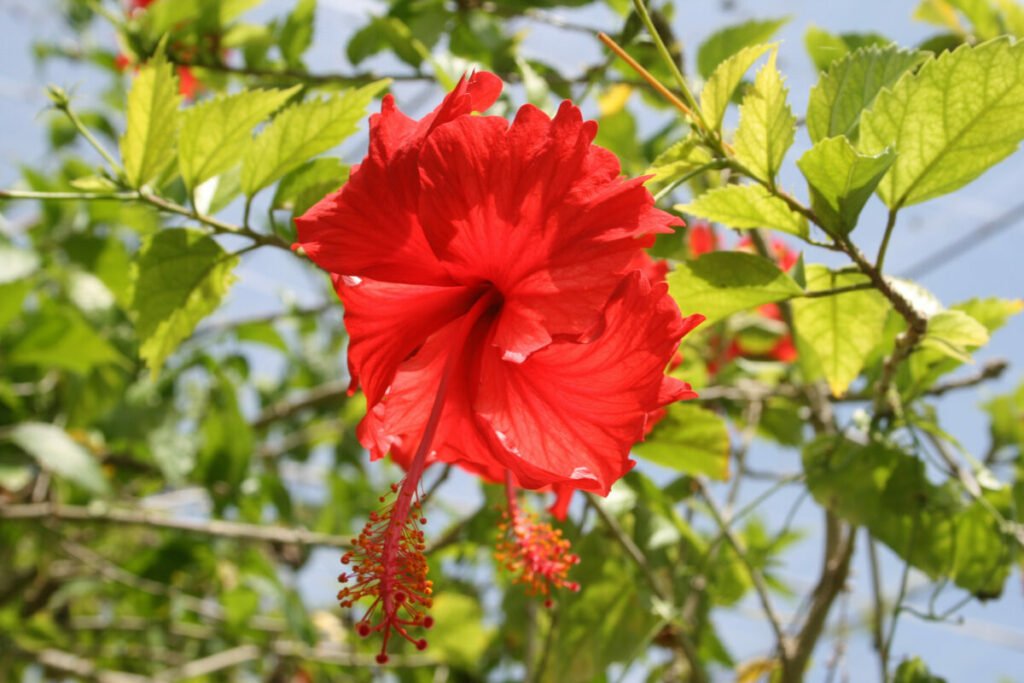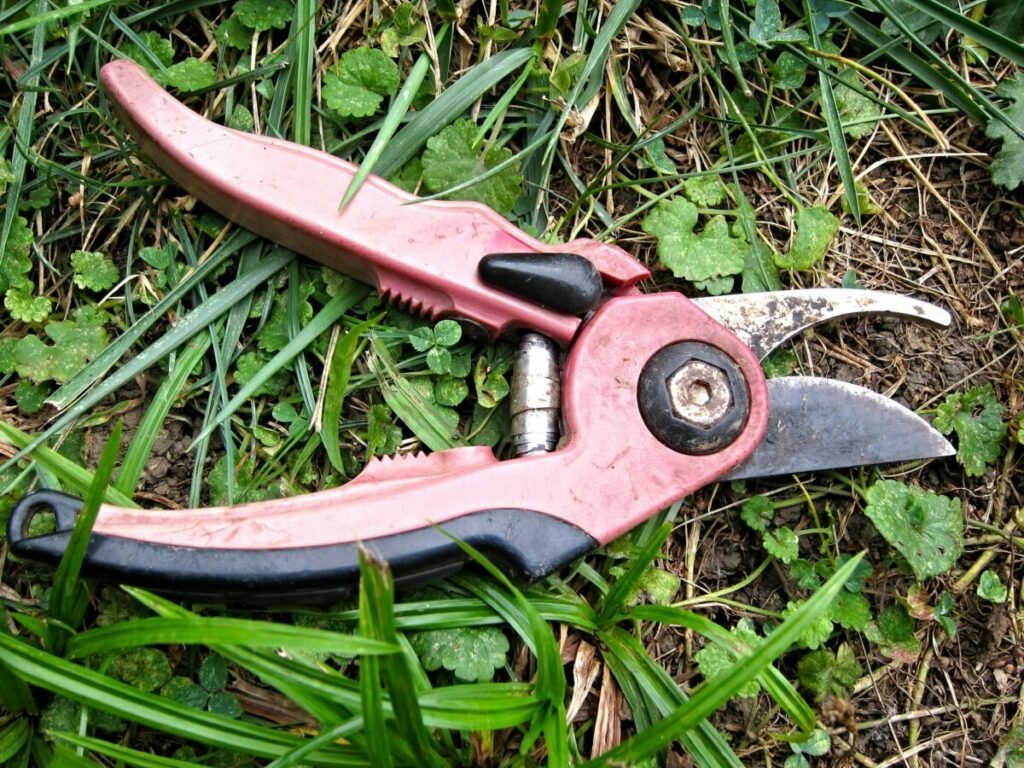Amy Boyes has earned an Honorable Mention in Streetlight’s 2023 Essay/Memoir Contest
The hibiscuses arrived in six-inch grower pots. Packed for cold weather in a foil and Styrofoam-lined box, they had journeyed in a transport trailer to my grandmother’s prairie flower shop.

“Careful, those are live plants!” Grandma would warn, as if “LIVE PLANTS” emblazed on the cardboard box was an insufficient indication.
Deposited on the shop floor, the box remained until a knife or pair of scissors could be fetched. Typically, neither was found and a substitute tool was employed—pruning clippers or even a stunted pencil from Grandma’s chaotic desk. Wedging the tool under the box’s top flap, I would loosen the industrial staples and remove the packing material.
We’d gather around as the hibiscuses revealed themselves. Red, yellow, peach—their tentative blooms pointed in no particular direction, limp from their journey across rural Manitoba.
“They’re dry,” Grandma pronounced, and a water pitcher was fetched. As each hibiscus was lifted from the box (the first being the most dangerous as there was no room to spare), Grandma doused them until they wet themselves. “They’re good now,” Grandma would assure. Set onto the work counter to drain, the hibiscuses awaited their final humiliation—the decorative foil.
Much loved in the last century, decorative foil came in long rolls. Available in all colours, and imprinted with a repeating design, foil was an economical way to cover a grower pot. Once crushed, it never reclaimed its former glory, but it was easy to use, and we went at the hibiscuses with relish.
“Now two of these are sold already, and you’re going to take a peach one home to your mother.”
Grandma was generous, perhaps to a fault.
***
“What are those?” I ask, twenty-five years later, removing my sunglasses to peer across the Maui forest.
“What are what?” my husband, Josh veers slightly as he maneuvers the rental car along the infamous Road to Hana.
“Never mind,” I reply, realizing the dangers of distracting him on a narrow cliff road filled with tourists.
“I’ll pull over.” Josh eases the car onto a narrow strip of pavement. Tucked in front of a tour van, our car is unlikely to be hit from behind. I slide out, holding the door half open lest it bangs against the guardrail.
“There’s a little path,” I call. “I’ll just be a minute.”
The red, rocky soil is damp, and my flip-flops slip as I clamour down the trail. Away from the skin-blistering heat of the road, a different world emerges. The sky recedes as the tropical plants flourish in a coexistent menagerie. Vines with variegated leaves the size of dinner plates wrap around trees, suffocating and triumphing. Ferns sway their human-sized fronds over Elephant Ears. Monstera, heliconia, and cordyline grow thick.
As the trail levels, the view of the ridge opens. From the highway behind me to the coast below, hibiscus trees grow twenty, thirty feet tall. Their red blossoms soar above the canopy, pointing to the sun in a reverential pose.
I hold my breath and shade my eyes. “Hibiscus are trees!” I whisper, circling the clearing in stunned admiration.
A tour guide’s voice carries through the trees and I drift towards it. Around a grove of rhododendron, I find a gathering of Hawaiian shirts, fanny packs, and sunburns.
“The state flower of Hawaii, the hibiscus miraculously survived early colonization of the islands,” the guide explains. “For a time, Hawaii’s plant species were disappearing at a rate of one plant every nine months. From 50,000 native plants down to 2,600, the vegetation of Hawaii was greatly diminished.”
The guide is young, suntanned. His shirt emblazons the logo of a tourism company. Despite his understandable commercial interest in keeping tourists coming, he projects earnestness for the island’s welfare.
“These hibiscuses will grow as tall as thirty feet. Their blooms appear for a day, then fall to the ground.” He chuckles awkwardly, but still convincingly. “Each day, the hibiscus reminds us to value beauty. Because nothing lasts. Not for long.”
***
“Grandma sent you a hibiscus,” I said, carrying the triple-bagged plant into our farmhouse kitchen.

Mom untied the bags and pulled out the plant. “It looks healthy,” she said, her brow furrowing. “I hope I can keep it going.”
Mom’s horticultural skills were impressive, but prairie winters were dark and long. Farm water was harsh and filled with minerals. Houseplants suffered without gentle rains and direct sunlight.
“It’s so beautiful,” she sighed.
I looked at the plant. It wasn’t beautiful. Woody stems defiantly grew in all directions. Blooms were still limp and small, petunia-sized at best. The foil wrapping was garish. And the plant was going to die. I knew that with certainty, even if my mother and grandmother hoped otherwise. The whole thing would wind up in the garage until spring, and then the pot and foil would go to the garbage heap.
The hibiscus depressed me. But I didn’t say that.
I watched Mom place the hibiscus close to a south-facing window. Dark now, tomorrow’s sun would shine over the snowbanks. Perhaps some rays would reach the hibiscus as it descended to the inevitable.
I was too young to know that the hibiscus wasn’t just a houseplant to my mother and grandmother. It was a vacation memory. A postcard from another planet. A miracle in a Manitoba winter.

Share this post with your friends.

